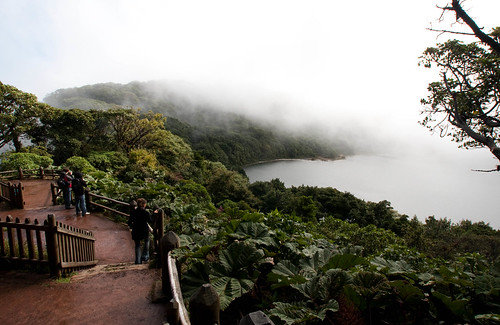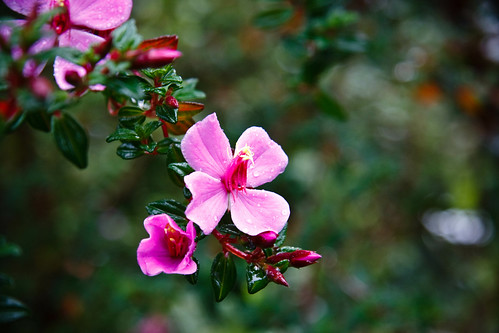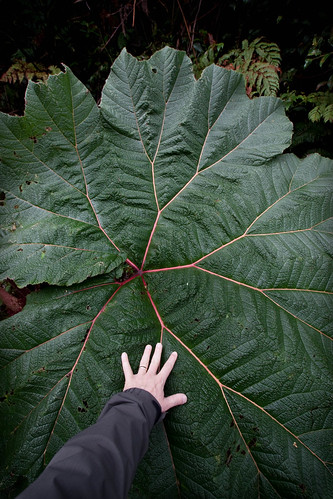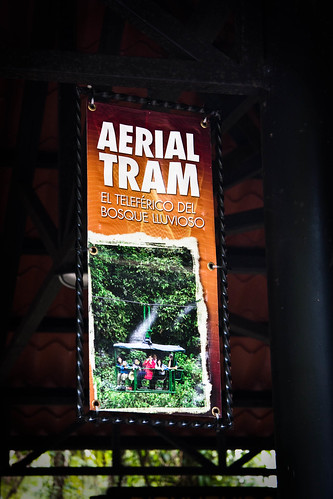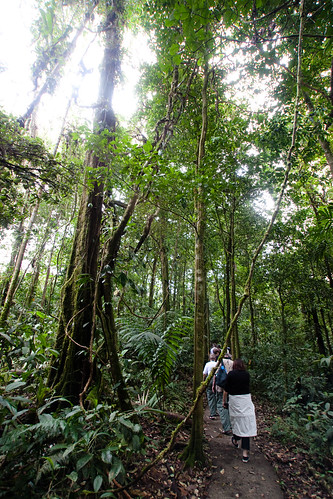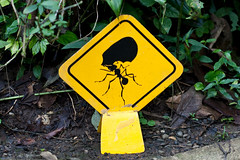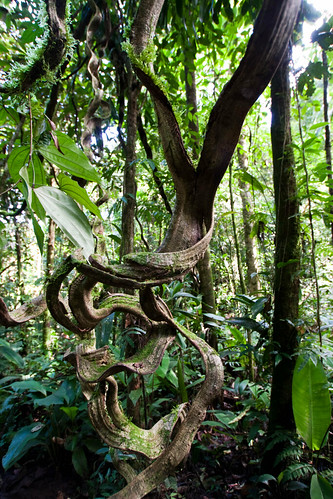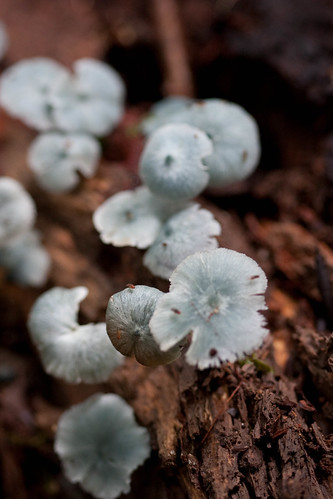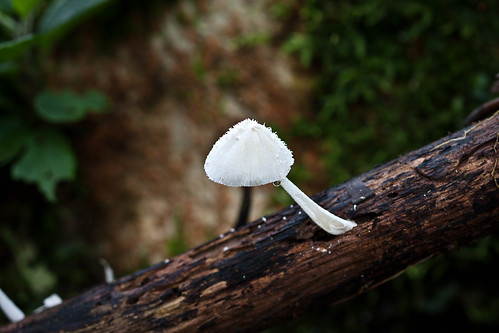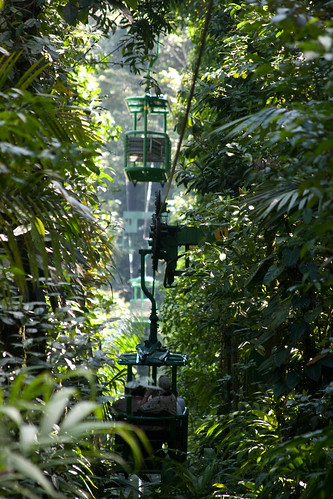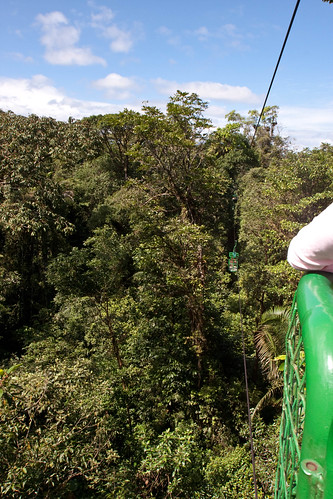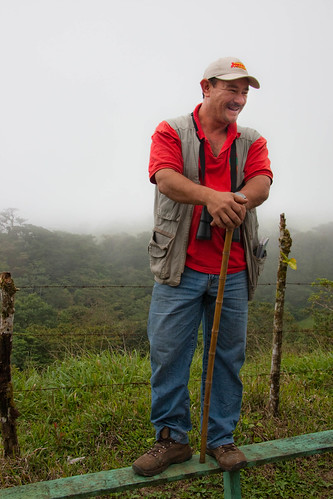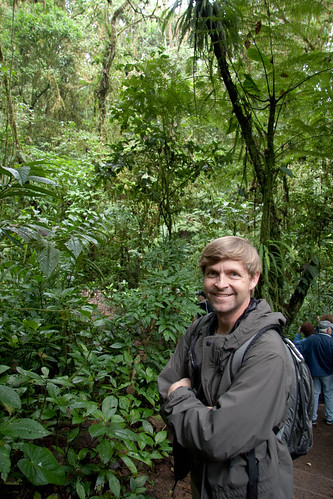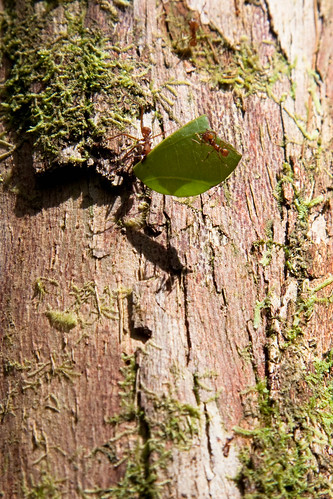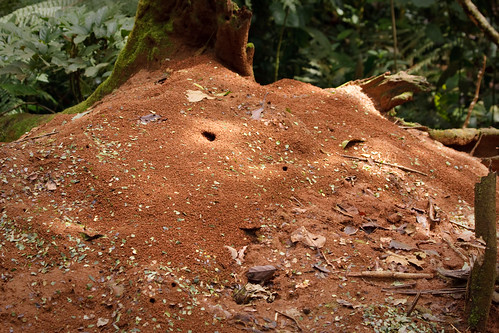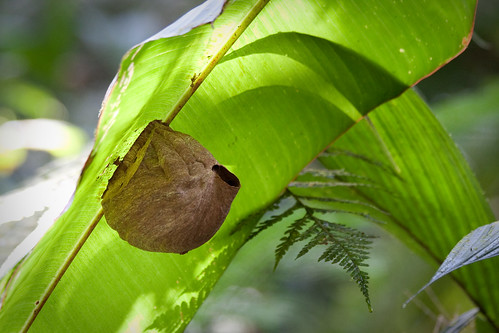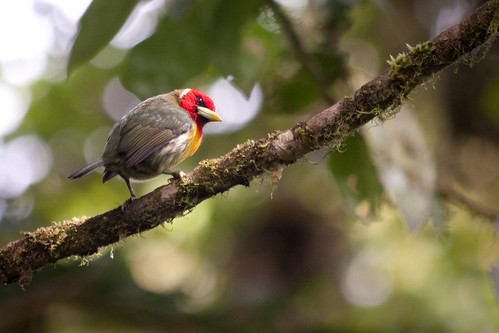Poas Volcano is in a cloud forest, so the last half hour or so of the drive is through dense mist.
Once at the volcano we were given the choice of a half mile walk up a fairly flat road from the Visitors’ Center to the crater, or a more interesting hike through the cloud forest to get there. Eric, Kevin and I opted for the hike, and Sarah’s wisdom lead her up the gentler path.
The three guys, having chosen the path less traveled, ended up on a pretty rigorous two mile hike at 8800 feet of altitude, with no acclimating beforehand. Not knowing that half the hike was a pretty steep and steady climb, I blasted out of the gate – regretting that strategy about half a mile later. We got a nice view of a smaller crater up higher, but the main crater was buried in a cloud when we finally arrived there.
In the meantime, Sarah had had a jolly walk to the main crater, seen it in its splendor before the clouds covered it, gave up waiting for us and strolled back to the bus.

